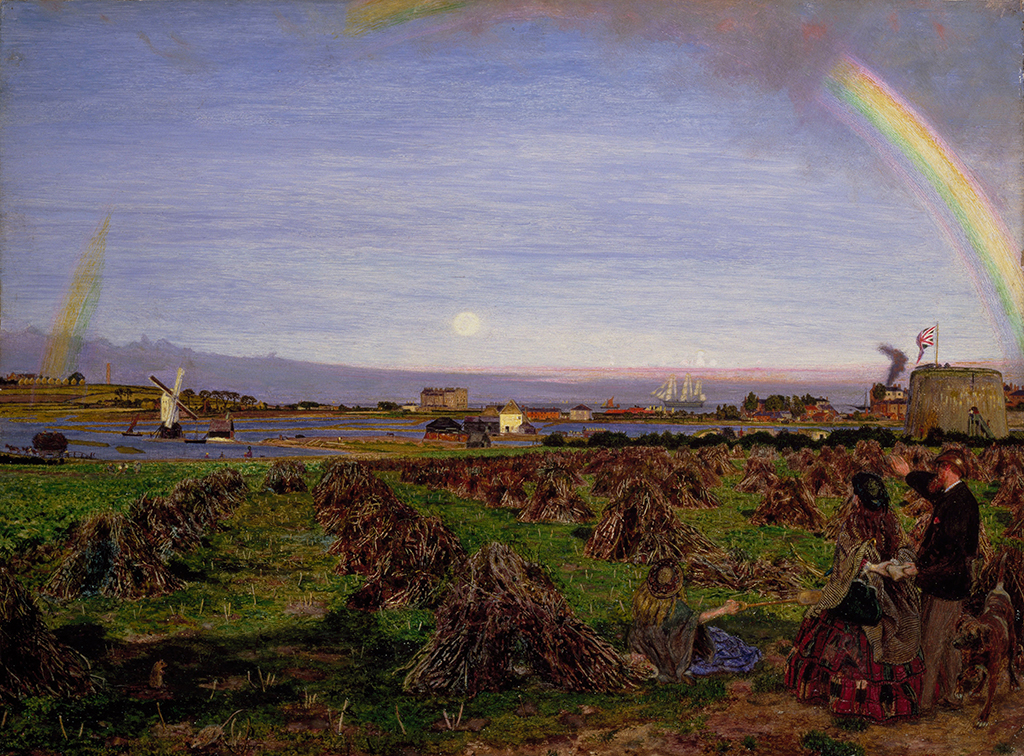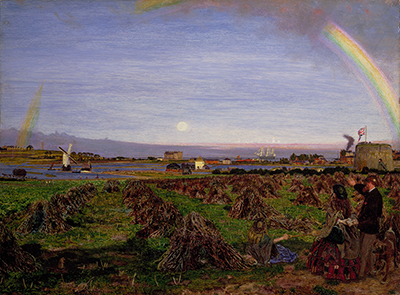Walton-on-the-Naze is a small seaside town in the East of England, close to the cities of Colchester and Ipswich. Ford Madox Brown captures the beauty of this region with this stunning landscape painting from 1860.
One can immediately tell from the nature of the rainbow which spreads across the top of the composition that this painting remained unfinished. The artist would have been approaching his forties at the time of this work, which makes it surprising that it was never completed as he would live for a futher three decades and therefore had plenty of time to finish it off. One can only debate about why this was to be the case. This region in the east of the country is renowned for being flat, particularly East Anglia which lies to the north, and so the artist aims to create interest by filling the scene with other details to allow for the lack of hills or mountains. In the foreground are a number of agricultural items, including stacks of hay. There are then an assortment of houses, a windmill, and even a ship within a relatively small area.
A family can be seen in the foreground looking out over the scene, just as we saw in many paintings by German Romanticist artist, Caspar David Friedrich. The additional purpose to this besides adding perspective is that the artist is underlining the rise in tourism which occured during this period in the Victorian age, as certain families started to enjoy greater amounts of leisure time. One can look at these figures and understand the enjoyment that they would have experienced at that time. One difference between this work and that of Friedrich is that the latter would typically only include one single figure, where as Ford Madox Brown uses a whole family in order to underline an additional message.
The rainbow is also allowed a large amount of focus because so much detail is placed in the bottom half of the painting whilst the sky is left relatively plain otherwise. There are few clouds and also a single tone to the sky which enables the rainbow to dominate. It is also carefully sized so that it fits pretty much across the entire horizontal width of the painting. The figures are also placed directly below it on the right hand side. It is likely that the artist combined a planned modelling for this scene along with some elements of artistic license in order to achieve the layout found here. The artist visited the town in August 1859 with his family. Research has concluded that the figures in this painting are actually this very same family and essentially a self-portrait. Ships could actually drop off visitors here at the time and so it may well have been a more profitable and lively area than perhaps it is today. Besides the tourists, we also see evidence of working class lives, with the contrast probably added deliberately.





